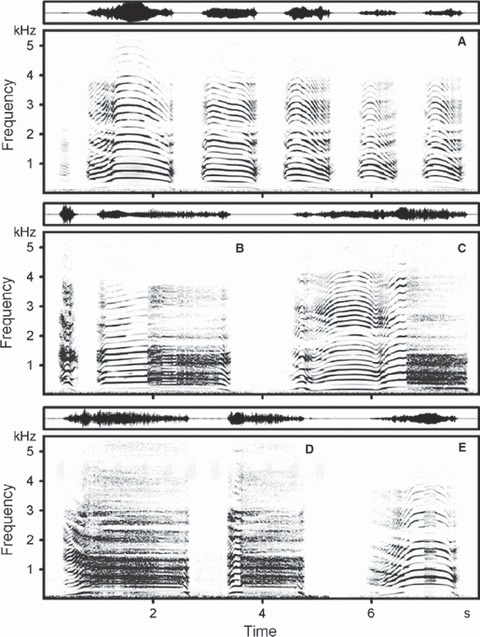Fig. 3.

Spectrogram (below) and wave-form (above), of natural bouts of rutting roars of Iberian red deer stags (Supporting Information Audio S1). (A) A six-call bout exhibiting low amplitudes in the lower parts of the call spectra typical for Iberian red deer stags. As a consequence, the bands of fundamental frequency and first harmonic are barely visible. The main common roar is in second place. (B) A two-call bout with the main harsh roar in second place; compared to the harmonics, the fundamental frequency band is barely visible. (C) A single-call bout consisting of a common roar with a large section of deterministic chaos approximately at 6.4–7.0 s. (D) A two-call bout with clearly visible descending formants at the beginning of the main harsh roar in the first place. (E) A single-call bout consisting of a common roar with a small section of deterministic chaos in the middle of the roar. Compared to the harmonics, the fundamental frequency band is poorly visible, whereas the descending formants are clearly visible at the beginning of the roar. The spectrogram was created at 11 025 Hz sampling frequency, Hamming window, FFT 1024, frame 50%, overlap 93.75%.
